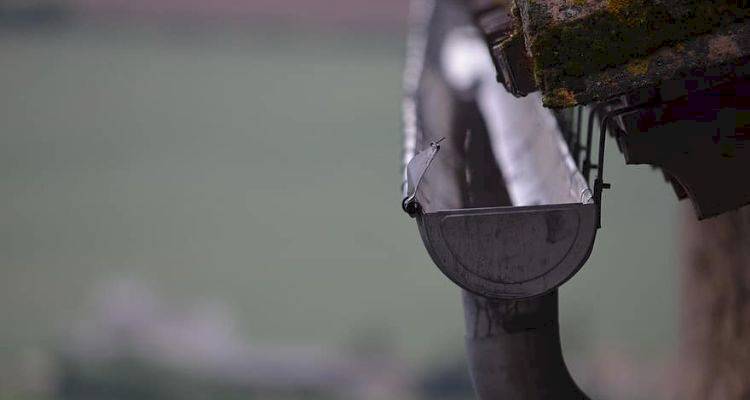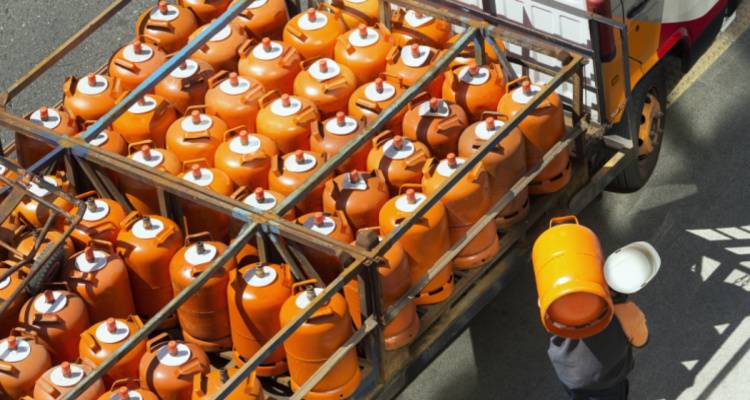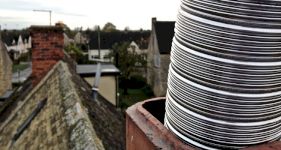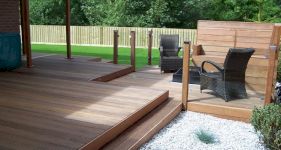Slate Roof Cost
- The average cost of fitting a slate roof is around £8,200
- The job will take several weeks to complete
- A complete pricing breakdown which includes what types of slate materials there are, along with what such a task usually involves
- How long the job should approximately take and a general overview of what types of services can be performed
- How to find and hire a roofer
Want to know what prices are involved in having a slate roof constructed?
In this cost guide, we'll discuss the prices of various types/sizes of slate roofs and explore other relevant topics ranging from what's involved in building a slate roof to a closer look at the different types of slate roofing materials.
Are you in need of a quote?
Then look no further! We have a wide range of slate roofing specialists ready to offer you a free quote!
The average cost of slate roof installation will be around £8,200, but the price will vary depending on various factors which will be explored below.
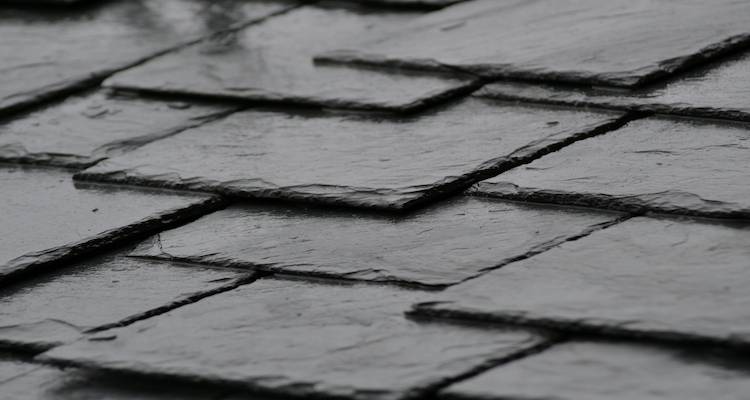
£8,200
Table of Contents
- How Much Does It Cost to Build a Slate Roof?
- Supply Only Costs
- Additional Costs
- Labour Costs and Timescales
- Cost Factors of Installing a Slate Roof
- What's Involved in Building a Slate Roof?
- Can I Install a Slate Roof Myself?
- Building Regulations & Planning Permission for Slate Roofing
- Types of Slate Roofing Materials
- Hiring Contractors to Install a Slate Roof Checklist
- FAQs
- Sources
How Much Does It Cost to Build a Slate Roof?
So, how much for a new roof?
The true average cost of building a slate roof is like trying to decipher the length of a string. Hence the average pricing given above is quite a rough estimate. There are many, many factors involved that would shape the price of building a slate roof.
It would cost approximately £2,700 to £3,300 to slate a terrace roof. As for an average, semi-detached home, the price will be around £6,300 to £7,700. Adding a slate roof to a bungalow or a detached roof meanwhile likely costs somewhere between £9,000 and £11,000.
The costs above are based on the pricing of around £90 to £110 per square metre for an average slate roof (this would include the cost of labour and supplies - more on that shortly).
However, for a Spanish slate roof, you’d need a budget of about £25 to £30 per square metre. This would bring lower the above costs by about 3.5 (i.e., three and a half times cheaper).
The cost factors involved include not only the size/type of roof, but the exact type of slate material used as well as ease of access. Another price factor that should not be overlooked is the location of your property. Where you live is relevant since labour prices differ from region to region.
What's the difference between English and Welsh roof slate?
Slate Roof Prices
| Type of Roof | Labour Cost | Supply Cost | Total Cost |
|---|---|---|---|
| Terrace | £1,050 to £1,350 | £1,650 to £1,950 | £2,700 to £3,300 |
| Semi-detached | £2,450 to £3,150 | £3,850 to £4,550 | £6,300 to £7,700 |
| Bungalow | £3,500 to £4,500 | £5,500 to £6,500 | £9,000 to £11,000 |
| Detached | £3,500 to £4,500 | £5,500 to £6,500 | £9,000 to £11,000 |
Supply Only Costs
We'll now look at the cost of supplies specifically. This is part of the overall slate roofing cost but excludes the price of labour.
You should be aware that the cost of supplies does not simply mean the price of purchasing the actual slates.
The cost of supplies could also include:
- Breather membrane.
- Battens with nails.
- Counter battens with nails.
On average, it costs about £55 to £65 per square metre to purchase slates for a roof. This would include around £50 to £55 per square metre for the actual slates along with additional costs such as a breather membrane, which is priced at about £2 to £3 per square metre.
If you’d prefer to have a Spanish Slate roof constructed, the overall supply cost would likely land between £25 and £30 per square metre.
Supply Costs of a Slate Roof
| Type of Slate Roofing Material | Supply Cost |
|---|---|
| Regular Slate | £55 to £65 per square metre |
| Spanish Slate | £25 to £30 per square metre |
Additional Costs
In this section, we’ll discuss some additional jobs you may wish to have undertaken while having your slate roof installed.
Insulating Your Roof
When having a new slate roof installed, you may find it a good time to have your roof insulated (if it isn’t already). A properly insulated roof can keep your home warmer during the cold winter months.
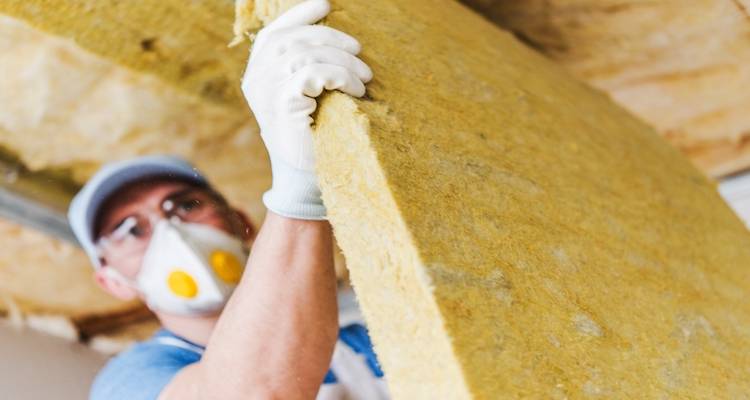
This, in turn, could keep your energy bills down and both save you money and lower your carbon footprint.
Here are some average roof insulation costs:*
- Fibreglass Insulation - £400
- Mineral Wool Roll Insulation - £450
- Spray Insulation - £800
- Warm Deck Insulation Boards - £650
*These prices are based on covering a 20 square metre area and would also depend on the type/pitch of your roof.
Garden Waste Removal
Upon having a new roof installed, it would be a good chance to have your garden cleaned and give it a new lease of life.
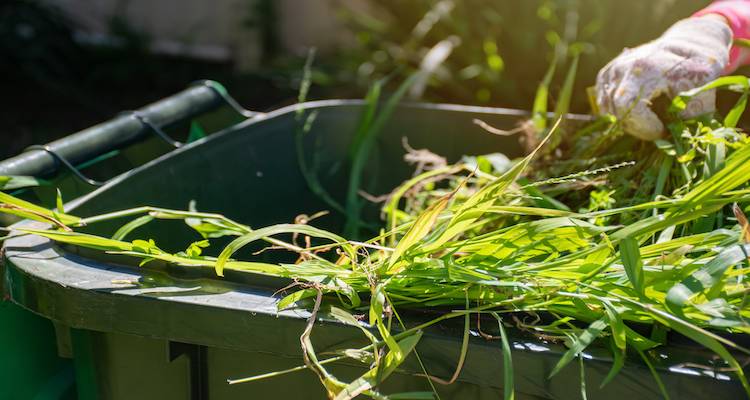
Here is what garden clearance would cost on average:
- 2-yard skip (20 bin bags) - £85
- 3-yard skip (30 bin bags) - £95
- 4-yard skip (40 bin bags) - £180
- 6-yard skip (60 bin bags) - £200
- 8-yard skip (80 bin bags) - £280
- 10-yard skip (100 bin bags) - £290
- 12-yard skip (120 bin bags) - £330
- 14-yard skip (140 bin bags) - £340
Labour Costs and Timescales
For this section, we’ll look at the price of hiring a contractor to perform the necessary work to build a slate roof. This is part of the overall cost and naturally excludes the supply costs.
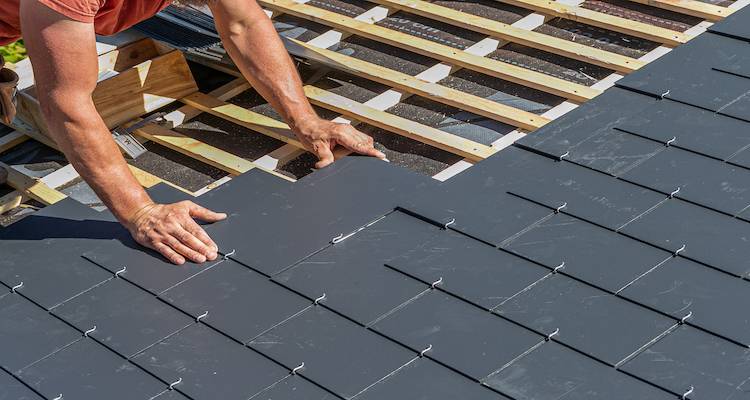
Roof contractors will likely charge about £35 to £45 per square metre of roof slate installation. The result would be that the cost of labour for a slate roof, regardless of the type, would likely fall in the thousands of pounds. The only exception would probably be for a relatively small Spanish slate roof.
As for the timescale of the job, it will probably take a few weeks in total. However, it can take days or even months depending on the size and type of roof among other factors. The cost of labour would also depend on where you live (more on this in the following section).
Cost Factors of Installing a Slate Roof
Let's now break down the cost-affecting factors in more detail. We’ll explain what these factors are and how they can vary and shape the overall cost of installing a slate roof.
Type/Size of Slate Roof
First and foremost, the size and type of roof you have will shape the cost of adding slates. This would include the type of pitch. If your roof is quite steep, the work may cost more than would be the case otherwise. This would relate to the fact that supports would be needed for roofers to lay the various slates.
Material
There are, of course, different materials to choose from. The pricing differs depending on the material. Examples include natural slate, fiber cement slate, concrete slate, metal slate and composite synthetic slate.
Ease of Access
How accessible your roof is also matters. If your roof is more accessible, the work should be easier and quicker. This would likely keep your labour expenses down. In addition, if access is difficult, it could be more expensive if scaffolding is required.
Location of Property
Where you live is another relevant cost-affecting factor. On the one hand, it’s generally more expensive to hire a roofer in the southeast of England than it is in northern England. Labour prices tend to also be below average in Scotland and Northern Ireland.
What's Involved in Building a Slate Roof?
Building a slate roof can be a complex process. The methods may vary depending on the specifics of the installation. Throughout the process, the manufacturer’s instructions should be followed unless done by a professional who knows the ins and outs of the process.
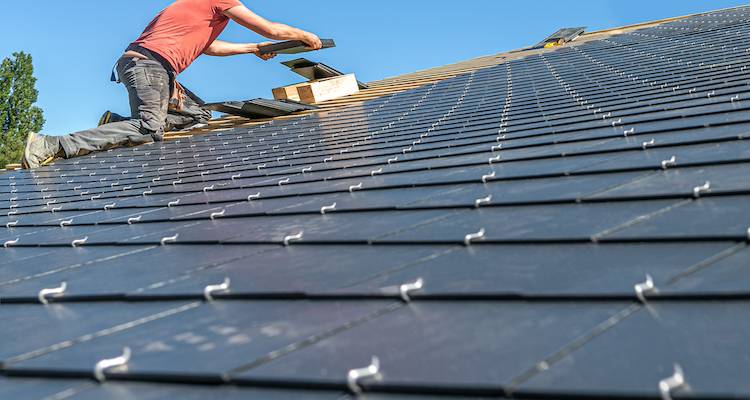
1. Preparation
Before the slate roof construction can get underway, it’s important to know the angle or pitch of the roof so that the size of the overlap can be calculated. Different slate tiles will suit different roof pitches and different roofs in general, so it’s important to ensure that the correct slates are being installed.
Notably, if the wind or rain levels in your area are more than average, you’ll likely require a larger overlap so make sure to keep this in mind.
Another important preparation to consider is that if your roof is new or you’ve stripped the roof, you need to ensure that the rafters have no nails sticking out of them or other elements sticking out of the timber for that matter. This is to ensure that you do not damage the breathable membrane.
If required, scaffolding should be added prior to any work beginning. Scaffolding will be needed if the roof is particularly high and difficult to access with just a ladder.
2. Installing the Slate Roof
If you are looking to replace an existing roof, then you will need to first remove the old roof. The first practical step of fitting the slate roof (again depending on the type and nature of the installation) would likely involve rolling out the breathable membrane. It should be pulled taught and nailed into position.
Next, the first batten and tile should be placed in position. This can be used to calculate the exact number of battens required. More battens can then be added, one after another from the top to the bottom of the roof.
At this point, it’s time to install the first row of slate tiles with an overlap established. Continue to add the remaining rows of tiles from there. The tiles can be secured into position using fasteners or nails.
They may be made from aluminium, copper, galvanised steel or stainless steel. Among the types of slate roof tiles to be installed, you’d also need suitable ridge tiles for a slate roof.
3. Clean Up
Once everything is safe and firmly in position, the clean-up can begin. If scaffolding had been set up, this can be disassembled now too.
Can I Install a Slate Roof Myself?
In general, it is best to leave installing a slate roof to a professional. Even if you have the right skills and knowledge (which would be requirements either way), a professional contractor is likely to pull off a more precise job and this reduces the risk of issues arising with your roof later down the line.
If scaffolding is needed, it’s definitely best to leave it to a professional.
If you decide to undertake the work DIY, ensure that you take all the necessary safety steps such as having a second person hold the ladder you use and consider wearing a safety harness for working on your roof.
Make sure your roof is safe to work on also. If in doubt, hire a professional roofer.
Some of the hazards/dangers associated with adding a slate roof DIY:
- Falling from a height.
- Slipping on a roof.
- Incorrect slate roof installation.
Building Regulations & Planning Permission for Slate Roofing
In this section, we’ll discuss the building regulations and planning permission rules for adding a slate roof.
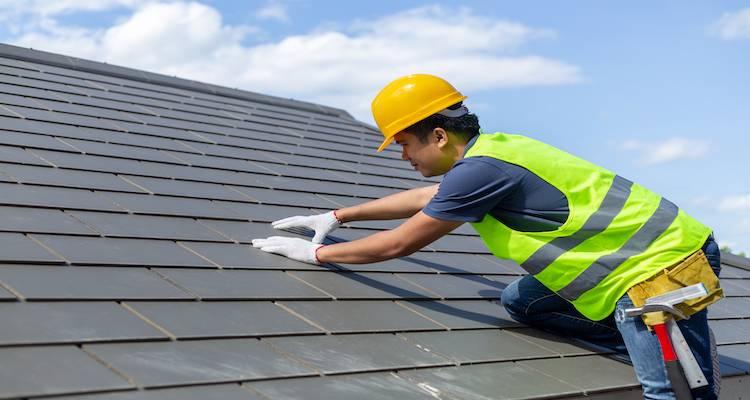
Building Regulations
When it comes to having a new roof installed, a wide range of building regulations apply. For starters, it's important that a new roof can resist weather and is resistant to fire spreading from one property to another.
It must also have the capacity to support loads (i.e., weights) and come with suitable insulation. Furthermore, a new roof needs adequate drainage and (in the majority of cases) it has to be ventilated to protect against condensation.
You’ll need to have full details of your new roof (such as the materials, its dimensions etc.) whether you have a pitched or flat roof. This is important as a means of complying with the regulations.
But that's not all…
The building regulations for covering a roof include:
- The materials covering a roof should be long-lasting and weather-resistant.
- If you’ve a pitched roof, the type of slate being used is partly determined by how shallow or steep the roof’s slope is.
- If your roof is near a boundary, it must have the necessary qualities to minimise the danger of fire spreading across your boundary.
As for the ventilation building regs, these are:
- Ventilation is unnecessary for a warm roof system (i.e., a roof where there is insulation fitted above the joists/rafters).
- Ventilation is needed in other situations, where you have a cold roof system.
- When ventilation is needed, the air should have room to enter the roof at one end before travelling through and exiting out the other end.
So slate roof vents or similar instalments may be needed. Building regulations may cost about £100 in total.
Planning Permission
Whatever type of roof you have installed and therefore including a new slate roof, there are general re-roofing planning permission rules.
The good news is that re-roofing is generally deemed permitted development, which means that planning permission would not be required.
This assumes the following:
- There is no enlargement of a dwellinghouse that features the addition or alteration of its roof.
- No additional storeys are being added to your home.
- There is no installation or alteration of solar equipment to your home.
However, if any of these expectations do apply, then planning permission will probably be needed. Additional rules may also apply. If in doubt, you can contact your local council for further advice on your specific re-roofing plans.
It tends to cost several hundred pounds for a planning permission application if needed. You’d be looking at waiting up to eight weeks for planning permission approval.
Types of Slate Roofing Materials
We'll now take a closer look at the various types of slate roof materials including a breakdown of their pros and cons and estimated costs.
Natural Slate Roof Cost
A sturdy and long-lasting option is natural slate. The slates cost about £40 to £60 per square metre, so it’s one of the costlier choices. However, it may last for a century or more if well-maintained.
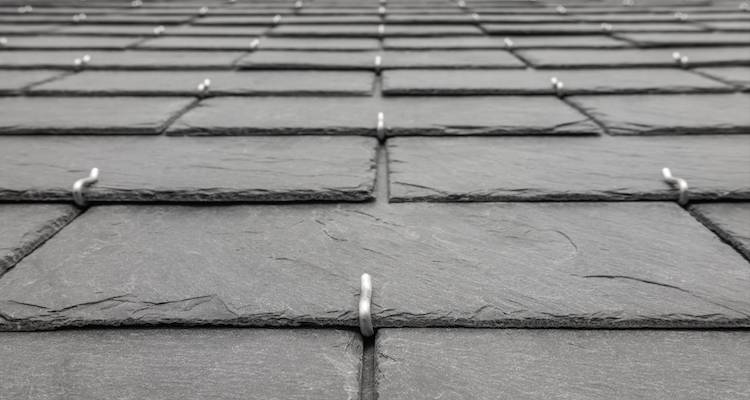
Natural slate consists of grains of quartz, mica and chlorite. One of the key advantages of natural slate is that it is available in a whole host of colours and textures. In addition, natural slate, if cared for properly can offer good fire resistance, moisture-resistance and prove resistant to pests also.
Fibre Cement Slate
Another popular choice is fibre cement slate. This is a more affordable alternative to natural slate. Fibre cement slate consists of sand, cellulose fibres and, of course, cement.
Fibre cement used to include asbestos as well, but this stopped after the 1980s for health and safety reasons as the dangers associated with asbestos became clearer.
Among the benefits of fibre cement slates is that they offer good water-, fire- and pest resistance. One of its downsides is that these slates are more vulnerable to breakage.
Not only that but long-term wind exposure can result in damage. This damage could, in turn, lead to water/moisture penetration which as a result could damage your roof and structure.
Fibre cement slate roofs can last for about 20-25 years if well-maintained. They also require repainting once every 10-15 years on average. So, they are cheaper to install than natural slate tiles but more expensive to maintain over the years.
Concrete Slate
Another low-costing choice is concrete slate roofing. These slates comprise cement, sand, water and oxide. However, like fibre cement slates, concrete slates need plenty of maintenance and should be repainted every several years albeit they can last for around fifty years or more if looked after properly.
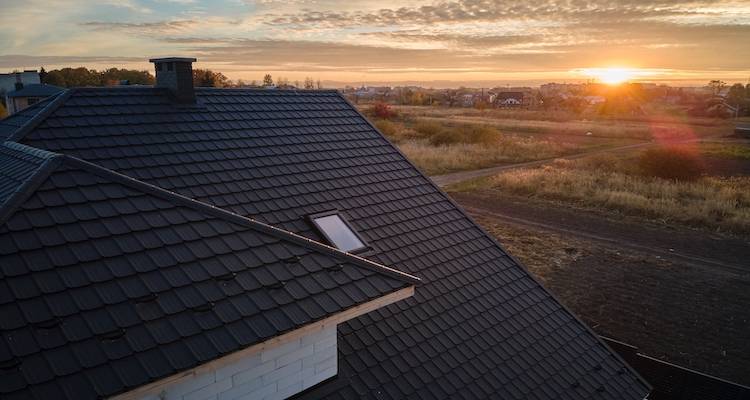
One core advantage of concrete slates is that many are quite energy-efficient and thus can help keep your heating bills down.
Hiring Contractors to Install a Slate Roof Checklist
Before hiring a professional to fit a slate roof, there are various tips worth taking on board as part of the process. Let’s take a look at the advice we have.
Checklist for hiring a slate roof installer:
- Ask family or friends for their recommendations.
- Get several quotes before making a decision.
- Check out any online ratings/reviews different slate roof installers have.
FAQs
How do you cut slate roof tiles?
When does a slate roof need replacing?
What distinguishes Spanish slate from regular slate roofing material?
How can I figure out how old an existing slate roof is on my home? It was there when I arrived.
However, it is possible the slate roof was added after your home was built hence why it would be good to double-check with someone who knows.
What are some downsides of slate roofs worth considering along with the benefits?
You won’t really be able to fix broken tiles so these would need to be replaced. Overall slate roofs have a good life expectancy, but this is more of an issue with given slates.
What are artificial slate roof tiles?
Sources
https://jjroofingsupplies.co.uk/blog/good-roofing-guide/how-to-guides/everything-you-need-to-know-about-cutting-roof-slates/
https://roofmaxx.com/2020/03/estimating-roof-age-signs-you-need-a-new-roof/



